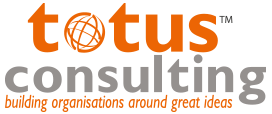
- June 10, 2022
- 3 Minute to read
- Articles & Blogs
The Problem of Setting Safe Goals
Now is the time of the year when managers sit with their employees to discuss and sign off their goals for the year. now is also the time when hr gets busy with the onerous task of ensuring that the process of goal setting is complete and the paper work is done, quickly. now is also the time when leaders travel the length and breadth of the country to hold town halls to communicate and sell their annual operating plans to every employee in the company.
In the drive to create a strong performance oriented culture, more and more organizations are doing everything possible to make performance count, hold employees accountable and of course design systems to manage consequences – positive and negative. (we find that a reasonable amount of pay is linked to the achievement of these goals and operating plans.)
From a time when performance management was such an imperfect process it is indeed great that we have come a long way. unfortunately, overdoing anything which is good brings with it unintended consequences. so, what is the unintended consequence of a formal performance management process, of clearly defining goals and linking rewards to such goals?
Well, the fundamental cultural shift of formalizing and institutionalizing ownership and accountability is that leaders and managers end up surrendering their skills and motivational prowess and good judgment to a system. it is now the system that will determine what goals employees set, what measures are assigned and therefore what consequences emerge.
Especially in medium to large organizations where managers have large teams and the process of signing off goals become onerous and there is an automated system to assist, employees can end up setting “safe and achievable goals” – goals that will ensure that they are more or less assured of their variable pay. this is especially true of functions that are business enabling rather than revenue generating or operations oriented. (of course many sales professionals are also experts at sandbagging). it becomes very hard to challenge the employee about such a process of lowering the bar.
Even more dangerous is the trend of setting goals that are easily measurable rather than goals that really matter to the business but are harder to measure.
At a time when businesses are facing disruptive changes and innovation and creativity and thinking beyond boundaries and collaboration are the things that matter the most, the trend of setting safe goals is indeed dangerous.
So what are some of the things that we can do to reverse such a trend?
For one, we must guard against principal accountabilities creeping into one’s goals. in other words, we must ask ourselves if employees should be rewarded with bonuses and performance linked pay for doing what they are paid to do?
We must ask if the organizations would rather have employees who play safe and achieve “safe goals” or would encourage employees to pursue audacious goals and fail or fall short. in other words, how do we capture and recognize great efforts in the right direction?
We must ask ourselves if in the interest of fairness and objectivity, leaders and managers are fighting shy of relying on their good judgment to pick real winners.
Of course, we should also ask ourselves if we are relying excessively on the system to secure performance and are not relying on the manager as much to train, motivate, support and set people up for success.
Beyond all this, employees will need to ask themselves lf if in trying to set goals that meet company standards, they are punching below their weight and falling short of giving their best.
Mark twain once said, “we should be careful to get out of an experience only the wisdom that is in it – and stop there; lest we be like the cat that sits down on a hot stove-lid. she will never sit down on a hot stove-lid again – and that is well; but also she will never sit down on a cold one anymore.“
In trying to manage consequences, we should not prevent employees from just trying hard

Leave a Reply